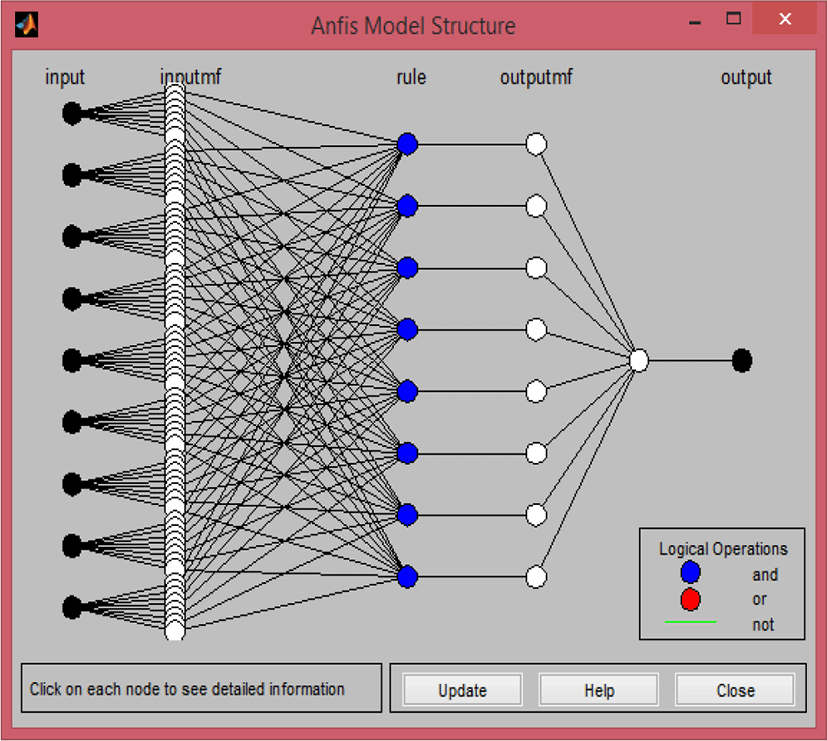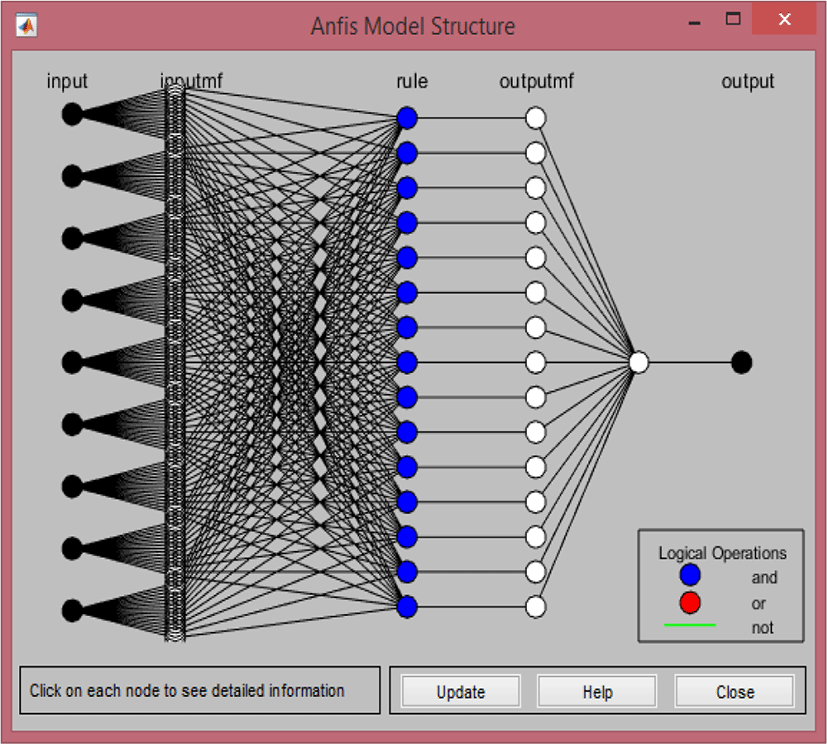I. INTRODUCTION
Alzheimer disease (AD) is emerging as the most leading form of dementia interfering severely with daily tasks of the patient. As per 2017 Alzheimer’s Statistics: about 44 million people across the globe have Alzheimer or a related dementia and only 1 person in every four people have been diagnosed with AD [1]. As per statistics in the report [2], the global cost of dementia would reach $1 trillion dollars by 2018 and will get increased to $2 trillion by 2030. Soft computing techniques have been promising out as medical expert systems for assisting medical practitioners for accurate diagnosis of the said disease. The main objective of this study is to evaluate the predictive performance of two alternative forecasting techniques that are Subtractive Clustering based Adaptive Neuro-Fuzzy Inference System (SCANFIS) with Fuzzy C-Means based ANFIS model (FCMANFIS) to reveal the most accurate forecasting technique for diagnosis of Alzheimer disease.
II. LITERATURE REVIEW
A significant research is being done in the domain of medical diagnosis using Neuro-fuzzy approach to diagnose various medical disorders. The literature related with the proposed study has been done and a general review of the same is presented as under:
A neuro fuzzy system based on fuzzy c-means (FCM) has been developed by Mohd Fauzi bin Othmanet al.[3] for diagnosis of diabetes. The suitability and performance of the FCM classification technique with respect to conventional Sub-clustering algorithm as a classifier in neuro fuzzy model ANFIS was evaluated for diagnosing diabetes on the dataset of 6172 records. This diagnostic system further optimized using weka and it achieved better accuracy as compared to the conventional approach.
K. Arthi et al. [4] presented an automated intelligent diagnostic tool for diagnosis of autism using neuro-fuzzy approach cascaded with back propagation learning algorithm. The experimental results predicted the accuracy of 85–90% for this classifier.
Obi J.C.et al.[5] developed a neuro-fuzzy model for diagnosis of Alzheimer on the basis of neuro-psychological tests. Nine symptoms like memory loss, difficulty in performing familiar tasks, problem with abstract thinking, etc. for AD have been taken as input parameters each with three input linguistic values (low, medium and high) and one output.
R. Sampath et al.[6] implemented a hybrid Neuro-Fuzzy Runge Kutta (HNFRK) Classifier to predict Alzheimer disease from the data set of 150 fMRI images consisting of 95 AD and 55 healthy controls samples. The proposed approach started with preprocessing the fMRI images using histogram based thresholding approach and then normalization of preprocessed image to MNI standard using SPM2 has been performed. Parcellation of brain scan into 8 ROI using spatial FCM algorithm, feature extraction and classification of features by ANFIS and Runge Kutta learning algorithm have been done. The performance of the proposed diagnostic system is evaluated with SVM and ANFIS classifier and proposed approach found to be better than the other two classifiers.
K. Ashish et al.[7] presented a diagnostic system based on NFS and genetic algorithm for evaluation of depression by training the model with 312 data samples and validated with 10 data samples.
An ANN and Fuzzy logic based model has been developed using a dataset of 3032 data records by L. Andriuset al. [8] to evaluate Huntington disorder symptoms. This diagnostic system consists of four components for dataset formation, ANN prediction model to predict the functional capacity level, Mamdani fuzzy logic expert system determine a stage of reaction and decision module for determination of person’s condition.
III. METHODOLOGY
For evaluating the performance of SCANFIS and FCMANFIS in diagnosis of AD disorder, the dataset for the study has been taken from Kaggle [9]. The data is in CSV format consisting of 336 instances (146-Diseased, 190-Normal) of the patients over the age group 60-98 years. The data acquired pre-processed with generalized methods and also normalized with different statistical methods. The dataset parameters are presented in the Table 1.
To attain the objective of the study, the experiments in Matlab 2018a have been performed. The data set for the study has been divided in the ratio of 60:20:20 (i.e. 202 samples for train data, 67 each for validation and test data) for two approaches. Three measures such as root mean square error (RMSE), prediction accuracy and precision have been calculated for these two models. Finally, the performances of these two approaches have been evaluated.
In the first phase of the study, the SCANFIS [10, 11] based AD diagnostic system has been implemented with parameters presented in the Table 2. In the second phase, the diagnostic system implemented using FCMANFIS [11] with parameters presented in Table 3.
IV. RESULT
After performing the experiments, it has been found out that these two techniques can diagnose AD but FCMANFIS predicted AD efficiently than SCANFIS model. The generated SCANFIS and FCMANFIS models are represented in Fig. 1 and Fig. 2 respectively. The FCMANFIS predicted accuracy of 99.10% with RMSE of 0.17126 and 100% precision whereas SCANFIS predicted accuracy of 95.83% with RMSE of 0.3549 and 99.2% precision respectively. The experimental results are presented in Table 4 and Table 5. Also, F-score predicted by SCANFIS and FCMANFIS models are 0.9497 and 0.9895, thus FCM based ANFIS outperformed SCANFIS model.
| Parameter | SCANFIS | FCMANFIS |
|---|---|---|
| Accuracy | 95.83 % | 99.10 % |
| Precision | 99.2 % | 100 % |
| F-Score | 0.9497 | 0.9895 |
| Error | SCANFIS | FCMANFIS |
|---|---|---|
| Training Error | 1.82*e-04 | 4.19*e-05 |
| Validation Error | 0.23246 | 0.1865 |
| Testing Error | 0.3549 | 0.17126 |
V. CONCLUSION
The experimental results show that SCANFIS and FCMANFIS can be efficiently used as expert systems for medical diagnosis. The performance of FCMANFIS is found to be better than that of SCANFIS in terms of accuracy, RMSE and precision. In the present comparative study, binary classification problem was taken. This study will be further enhanced to multi-class problem for comparative purposes.









